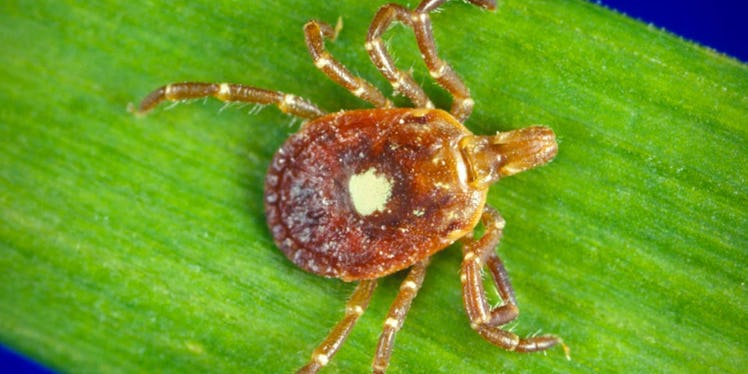The lone star tick, an odd parasite that can cause its hosts to develop permanent meat allergies, is spreading across the United States, according to research in the Journal of Medical Entomology. Like the ticks that carry Lyme and Powassan, the lone star tick’s bite can also cause itching, hives, cramping, difficulty breathing, and even death. The difference, of course, is that only the lone star tick can ruin your summer barbecues. Forever. Once found only in the Southeast U.S., at least 100 lone star bites have appeared in Minnesota, New Hampshire, and Long Island in the past year. Experts say the meat sweats have only just begun.
“The lone star tick is a very, very aggressive biter,” F. Scott Dahlgren, an epidemiologist with the Centers for Disease Control and Prevention, told NPR in 2015. “It’s extremely prevalent in a huge swath of the country.” The tick can also transmit Rocky Mountain Spotted Fever, the aforementioned study indicates, which can be deadly. “It’s super, super scary,” Dahlgren told NPR. “And it’s an ugly, ugly death, too. It’s a horrific thing to go through and to see a loved one go through.”
But far more insidious is the tick’s ability to make you lose your taste for meat for good. How the lone star tick—named for the Texas-shaped white patch on its back and not, ironically, for the steak house that you’ll never be able to visit again after it bites you—transmits this cruel allergy remains a mystery. University of Virginia immunologist Thomas Platts-Mills came close to homing in on the cause in 2008, when he traced the allergic reaction to alpha-gal, a protein-linked sugar found in meat. Platts-Mills made the connection after discovering that cancer patients taking cetuximab (a drug that also contains alpha-gal) were 10 times more likely to suffer from allergic reactions to the drug when they lived in an area known to have lone star ticks.
“There’s something really special about this tick,” Jeff Wilson, an asthma, allergy, and immunology fellow in Platts-Mills’ group told Wired. “Just a few bites and you can render anyone really, really allergic.”
Though solid figures are hard to come by, the CDC reports that “the distribution, range and abundance of the lone star tick have increased over the past 20-30 years,” and they have been observed as far north as Maine and as far west as central Texas and Oklahoma. With more documented meat allergies, cases of Rocky Mountain Spotted Fever, and warnings that 2017 will be the worst year for ticks yet, there may be cause for concern. The CDC recommends dousing loved ones in repellents with 20 percent DEET. The American Academy of Pediatrics says you can go up to 30 percent, but that any higher won’t help.
Until then, enjoy that burger. It may be your last.
